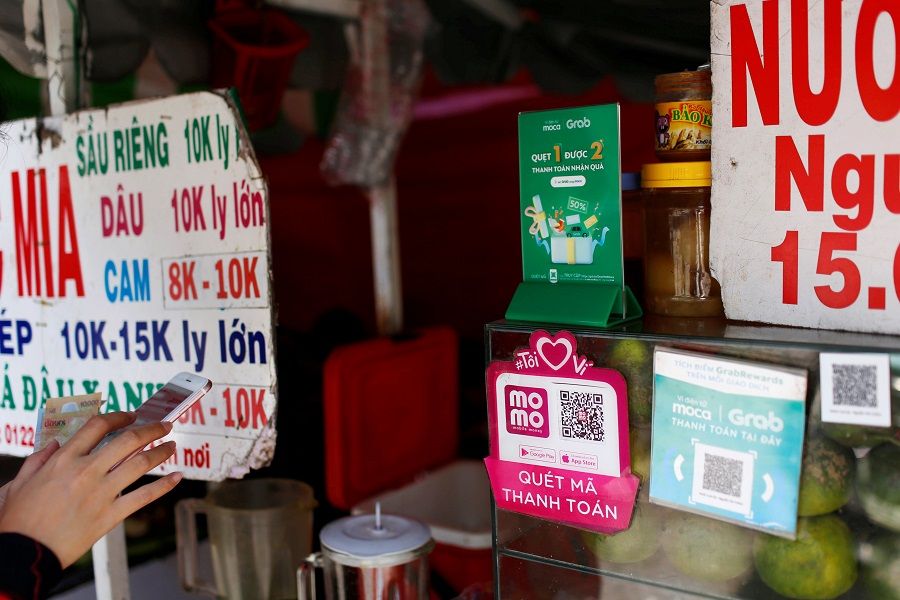Chinese academics: How China and ASEAN can deepen digital economy partnership

ASEAN held its 1st ASEAN Digital Ministers Meeting (ADGMIN) via video conference on 21-22 January 2021, introducing a series of digital policies at the meeting. This indicates that the development of ASEAN's digital economy will be comprehensively improved, and by extension provide valuable opportunities for China to deepen bilateral digital economy cooperation with the ASEAN countries.
Rigorous digital policies introduced
ASEAN digital ministers launched the ASEAN Digital Masterplan 2025 (ADM 2025) as a guide for the development of ASEAN's digital economy in the next five years. The masterplan states that ASEAN aims to be a "leading digital community and economic bloc, powered by secure and transformative digital services, technologies, and ecosystem", and undergirded by cybersecurity to foster a trusted and reliable digital space.
To achieve that vision, ADM 2025 has specified eight desirable outcomes to be achieved in the next five years, with multiple enabling actions elaborated on for each outcome. Timetables have been set based on the ranking of the importance of these actions. A special project management team would also supervise and implement these actions.

The ASEAN ministers had also approved the new Data Management Framework (DMF) and Model Contractual Clauses for Cross Border Data Flows (MCCs), which are the implementation mechanisms of the initiatives from the 2018 ASEAN Framework on Digital Data Governance. The two documents can help companies reduce the cost of negotiations and compliance while providing adequate protection for cross-border personal data flows.
The DMF provides step-by-step guidance for companies to improve their data governance structure, risk management, and safeguard measures. It helps companies establish an efficient data lifecycle management system. The MCCs provide template terms and conditions for companies to formulate cross-border data transmission contracts, through clarifying important definitions and the obligations of both data exporters and receivers. The MCCs are for voluntary adoption by companies.
The recent series of digital policies issued by ASEAN include not only the top-level design for the development of the digital economy but also specific implementation measures as well as guidelines for digital governance.

ASEAN's digital economy is entering the fast lane
The recent series of digital policies issued by ASEAN include not only the top-level design for the development of the digital economy but also specific implementation measures as well as guidelines for digital governance. They will improve the digital competitiveness of the ASEAN region and have an impact on competition and cooperation within the digital ecosystem in East Asia and the globe.
ASEAN's digital economy was at the introductory phase before and is right now entering its fast lane. With the rapid development of cutting-edge technologies such as artificial intelligence, cloud computing, the Internet of Things (IoT), and blockchain, a new round of technological competition is in full swing. Accelerating the use of digital technologies to promote economic recovery in the post-epidemic period has become an urgent reality. At the same time, issues such as inclusive growth, sustainable development, privacy and security protection related to the digital economy have also attracted the attention of the international community. These factors have driven ASEAN to further improve its digital economy development framework, to shift gears and hit the accelerator.
Through digital economy cooperation with China, which has a complete industry, a huge market, and a leading digital ecosystem, ASEAN is expected to become an important area of the global value chain, driving the East Asian value chain to become the growth pole of the world economy.
ASEAN is dedicated to building a highly competitive regional digital market. The masterplan includes not only traditional terms such as improving digital infrastructure, popularising e-government, and promoting industrial digitisation, but also emerging issues such as antitrust and anti-unfair competition, reducing carbon emissions, and enhancing development inclusiveness. More importantly, ASEAN intends to establish an integrated digital market by reducing barriers to cross-border data flow, implementing joint supervision, unifying technical standards, and cultivating regional-level telecom enterprises. These will greatly facilitate the free flow of digital production factors in the region and build a highly competitive integrated digital market.
ASEAN will become an important region in the global value chain. In the era of the digital economy, the main factors affecting the layout of value chains are shifting from labour costs, natural resources, technology, and market to digital technology, capital, market, and data volume. ASEAN is now developing its digital advantages while continuing to leverage its traditional factor endowments. Through digital economy cooperation with China, which has a complete industry, a huge market, and a leading digital ecosystem, ASEAN is expected to become an important area of the global value chain, driving the East Asian value chain to become the growth pole of the world economy.
ASEAN also intends to reshape its centrality amid digital competition among big powers.

As ASEAN continues to improve its digital governance framework, the DMF and MCCs will promote the coordination of data management and cross-border data flow standards across the ASEAN region. It will help ASEAN establish a transparent, credible, and responsible digital business environment, which serves as a foundation for the future standardisation of global data flows.
ASEAN also intends to reshape its centrality amid digital competition among big powers. Cross-border digital cooperation is becoming the focus of big powers. The reasons for ASEAN to launch the masterplan at this time is threefold. The first is to bridge the internal digital divide and resolve differences to enhance ASEAN's overall leadership in the digital field. The second is to take advantage of its huge data volume and follow the example of the EU to build a single data market or even a relatively closed digital area. It will help ASEAN increase its bargaining chip in foreign negotiations. The third is to increase ASEAN's strategic value to both China and the US by promoting its internal digital interconnection, and to avoid the pressure of taking sides.
Deepening China-ASEAN digital economy cooperation
The successful implementation of ASEAN's digital policies is inseparable from China's support on technology, data, capital, and intellect. It is time to enrich the connotation of the China-ASEAN digital economy partnership.
First, to deepen market-oriented cooperation in the digital industry. The signing of the Regional Comprehensive Economic Partnership (RCEP) and the adoption of the Initiative on Building China-ASEAN Partnership on Digital Economy has opened up a broad space for bilateral cooperation in the digital industry. China should adhere to the principles of corporate priority, market orientation, and government guidance, to encourage Chinese digital business to invest in ASEAN's new infrastructure construction, e-commerce, digital finance, and other related areas.
China and ASEAN should establish a multi-level cybersecurity cooperation mechanism focusing on building security capacity, laying a foundation for future construction of a regional governance system.

Second, to promote technology-driven cooperation in smart cities. Smart cities are important testbeds of China-ASEAN digital economy cooperation. Cities with developed digital economies in southern China can explore one-to-one cooperation with the pilot cities listed in ASEAN Smart Cities Network. The cooperation will build a platform for leading Chinese companies such as Huawei, ZTE, and China Mobile to leverage their technological advantages.
Third, to consolidate policy-guided cybersecurity cooperation. Cybersecurity is likely to be the leading field and important support for China-ASEAN digital economy cooperation. China and ASEAN should establish a multi-level cybersecurity cooperation mechanism focusing on building security capacity, laying a foundation for future construction of a regional governance system.
Fourth, to facilitate experience-supported digital rule-making cooperation. The game of international rules on digital governance, centered on cross-border data flow, digital taxes, and intellectual property protection, is intensifying. China can share its concept of digital governance and the innovative regulatory experience with ASEAN, to lead the overseas practice of the principle of extensive consultation, joint contribution, and shared benefits.

